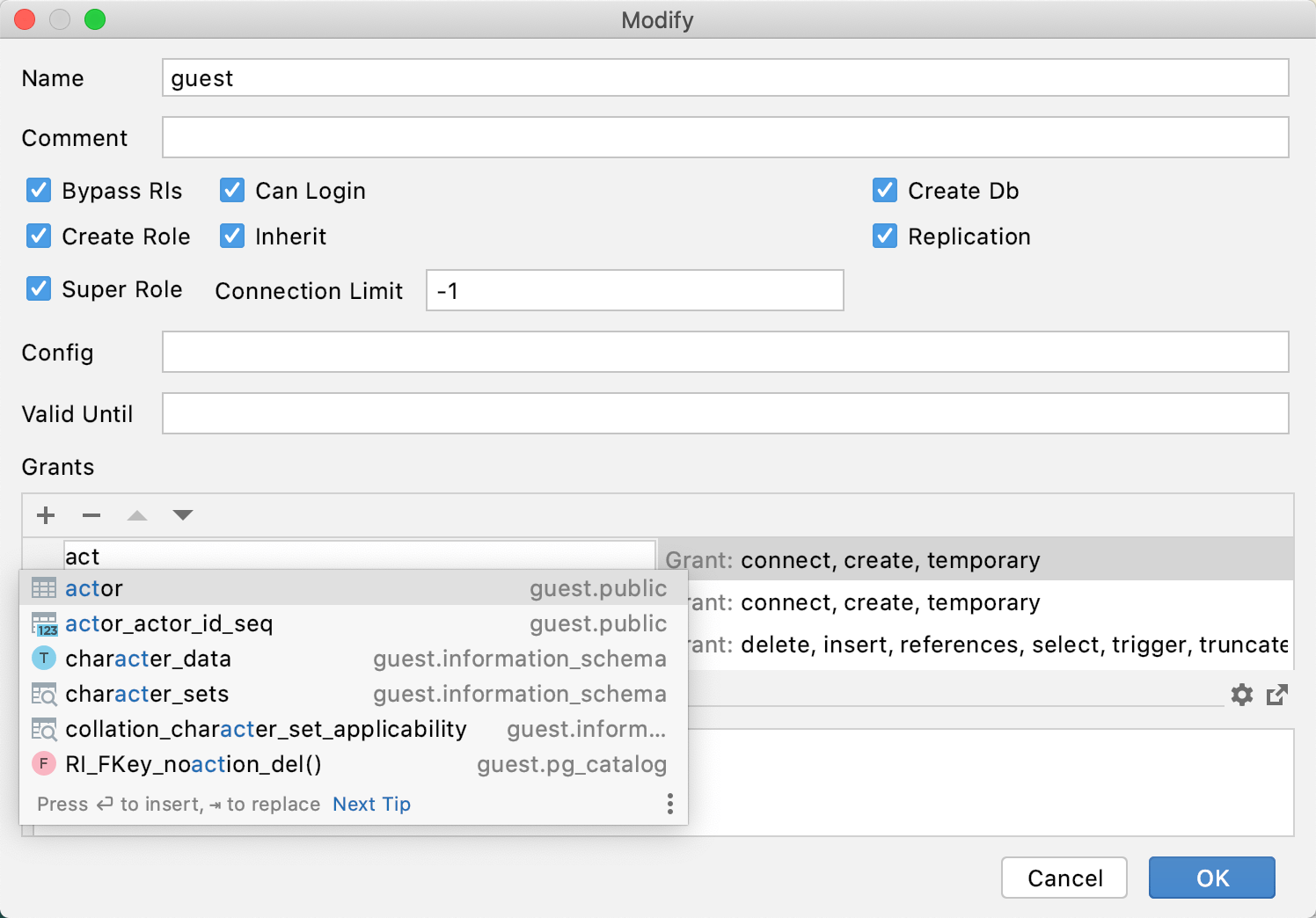Users and roles
Different databases use concepts of users and roles to manage the permissions in your databases. Both of them are used for access control and define a set of permissions. Consult with the documentation of your database vendor what type of concept the database uses for access control. In some databases, a role can be a user that has the login right.
Users and roles can be seen in the Database tool window. You can see a reference on node and object icons in the Icons for data sources and their elements chapter of Database window topic.
Create users and roles
In the Database tool window (), right-click a data source node and navigate to or .
For some databases, you need to specify a database where you want to create a role or a user. In this case, you must expand the data source tree to the database node, right-click the database node and select or .
Select the necessary database settings. In the Preview pane, you can change the generated SQL code.
Click OK.
To see your changes, press Ctrl+F5.
Configure GRANT privileges for objects
In the Database tool window (), right-click an object and select Modify <Object>.
On the Grants tab, click the Add button (
).
In the user field, type the username. You can press Ctrl+Space to use code completion in this field.
Click the grant field, from the drop-down near each privilege, select Grant or Grant with option. The Grant with option privilege means that a user can grant to or revoke from other users those privileges.
Grant permissions to objects
In the Database tool window (), right-click a user or a role and select Modify Role.
In the Grants section of the Modify dialog, add (
) or remove (
 ) permissions to database objects.
) permissions to database objects.You can use auto-completion for database objects.
Click the grant field, from the drop-down near each privilege, select Grant or Grant with option. The Grant with option privilege means that a user can grant to or revoke from other users those privileges.
